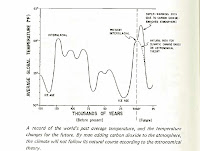The history of the process of understanding ice ages was told in a fascinating way - like a detective story - evidence, theory, some evidence to support a theory, other evidence to disapprove it, new theories proposed and new evidence, and finally after 100 years, in 1976, finally two astronomical theories were confirmed as the main reasons behind the ice age, and thus the cycles of global climate change. The story showed the vigor of scientific discovery, and the difficult long journey to fully understand ice age. To me, an engineer, the process of understanding the ice age is a perfect example of root cause analysis - before we know the root cause, we only know partial truth.
So what are the main causes of ice age or global climate change?
Before giving the answer, we need some explanations of astronimical terms. Earth orbit around Sun changes gradually from circle to ellipse due to gravitational interactions between planets in solar system and it repeats itself in 100,000years. Earth axis of rotation is an imaginary line from south pole to north pole, it has an angle to the normal of orbit plane. This angle is called a tilt. The axial tilt angle is ~ 23.5 degrees. The axial tilt is not a constant, it changes from 22degrees to 25 degrees in 41,000 years. The axis is not fixed with respect to the normal either, it moves around it in a circle, or wobbles, this is called axial precession, the axial precession completes a circle in 22,000 years.
Simply said, the main causes to climate change are: 1) earth orbit eccentricity; 2) earth axial tilt, and 3) earth axial precession. of the three factors, eccentricity has the largest impact on climate. The cycle of eccentricity is 100,000 years, for axial tilt it is 41,000 years, and axial precession, 22,000 years. These are first order factors that influence climate on earth; volcano dust, carbon dioxide, Sun spots influence climate change, but in a small way, in math language, these are second order effect.
The facts that amazed me inlcude:
1. In 1860s, Scotsman James Croll used earth orbit and axial precession to explain ice ages - an astronomical theory. In 1890s, Yogoslavia mathematician Miluin Milkankovitch, added axial tilt change into the astronomical theory, but he neglected the orbit change. In 1976, the combined astronomical theory of Croll and Milkankovitch about ice age and global climate cycles were confirmed through oceanographic studies.
2. Earth has been warming up for the past several thousand years. Due to human activities, primarily green house effect from carbon dioxide production, earth will reach a super warm state in 100 years. The super warm state is predicted to last 1000 years or so.
3. The earth, however, will get into another ice age in 20,000 to 25,000 years.

So despite carbon dioxide being a second order factor in climate change, it will perturb the natural path of climate change significantly in 100 to 1000 years, negligible in astronomical time, but tremendous for human time. We need to reduce CO2 emission to minimize the global warming and thus prevent catastrophic climate to human.
References
R.V. Fodor, Frozen Earth: Explaining the Ice Ages, Enslow Publishers, 1981.
J. Imbrie, K. Imbrie, Ice Ages: Solving the Mystery, Enslow Publishers, 1979.
